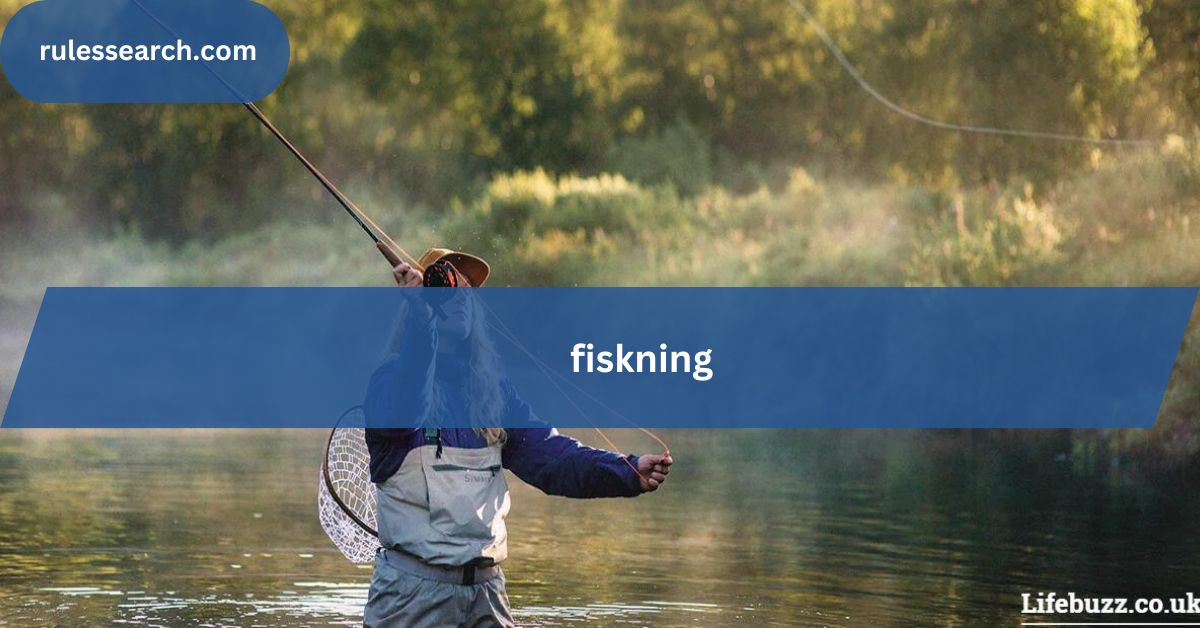Fiskning, known as fishing in English, is a time-honored tradition and a beloved pastime for many around the globe.
Whether you’re a seasoned angler or a novice hoping to cast your first line, fishing offers a tranquil escape into nature and an opportunity to connect with the environment.
This comprehensive guide will explore the history, techniques, equipment, and environmental impacts of fishing, providing you with everything you need to become a proficient angler.
History of fiskning :
1. Early Fishing Techniques
Fishing dates back to prehistoric times, with evidence suggesting early humans used spears and harpoons. Archaeological findings, such as fishhooks made from bones, indicate that fishing was a crucial part of early human survival. These rudimentary methods laid the foundation for the diverse techniques used today.
2. Evolution of Fishing Gear
Over the centuries, fishing gear has evolved significantly. From simple nets and traps to modern rods and reels, technological advancements have transformed fishing into a sophisticated activity. The development of materials like fiberglass and carbon fiber has made fishing equipment lighter and more durable, enhancing the overall fishing experience.
3. Cultural Significance
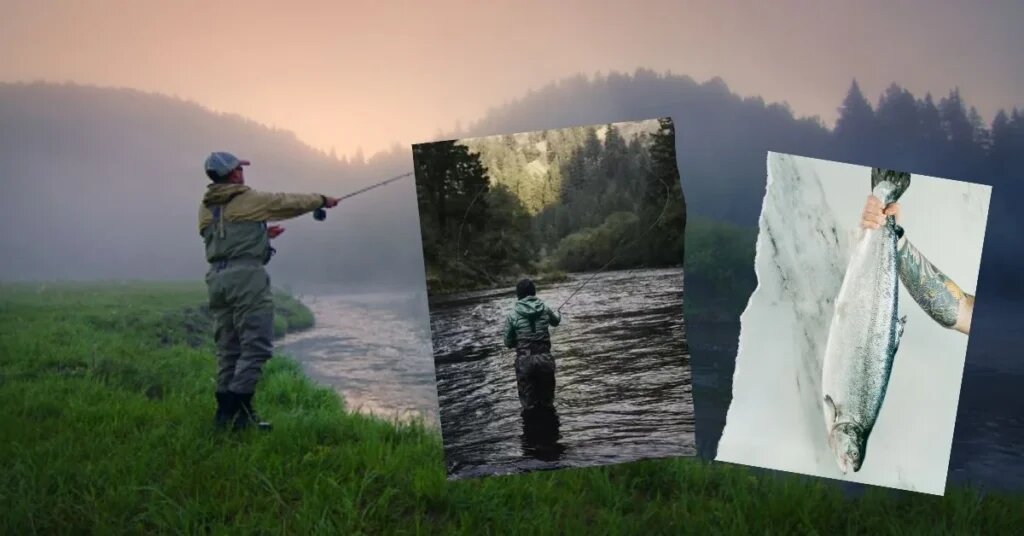
Fishing has played a vital role in the cultural and economic development of many societies. Ancient civilizations such as the Egyptians and Greeks practiced fishing using primitive tools and depicted fishing scenes in their art and literature. In many cultures, fishing is not just a means of sustenance but also a spiritual and communal activity, often accompanied by rituals and traditions.
Types of fiskning
1. Freshwater Fishing
Freshwater fishing involves fishing in rivers, lakes, and streams. This type of fishing is accessible to many people and offers a variety of species to target. Common freshwater fish include bass, trout, and catfish. Techniques such as fly fishing, baitcasting, and spin fishing are popular among freshwater anglers.
2. Saltwater Fishing
Saltwater fishing takes place in oceans and seas. It requires different equipment and techniques compared to freshwater fishing due to the size and strength of marine fish. Popular saltwater fish species include tuna, marlin, and snapper. Saltwater fishing can be done from the shore, on boats, or by deep-sea fishing.
3. Fly Fishing
Fly fishing uses lightweight lures called flies to mimic insects. It requires specialized casting techniques and is often practiced in freshwater streams and rivers. The art of fly tying, where anglers create their flies, is an integral part of this fishing style. Fly fishing is known for its graceful casting methods and is often associated with a deep appreciation for nature.
Essential fiskning Equipment
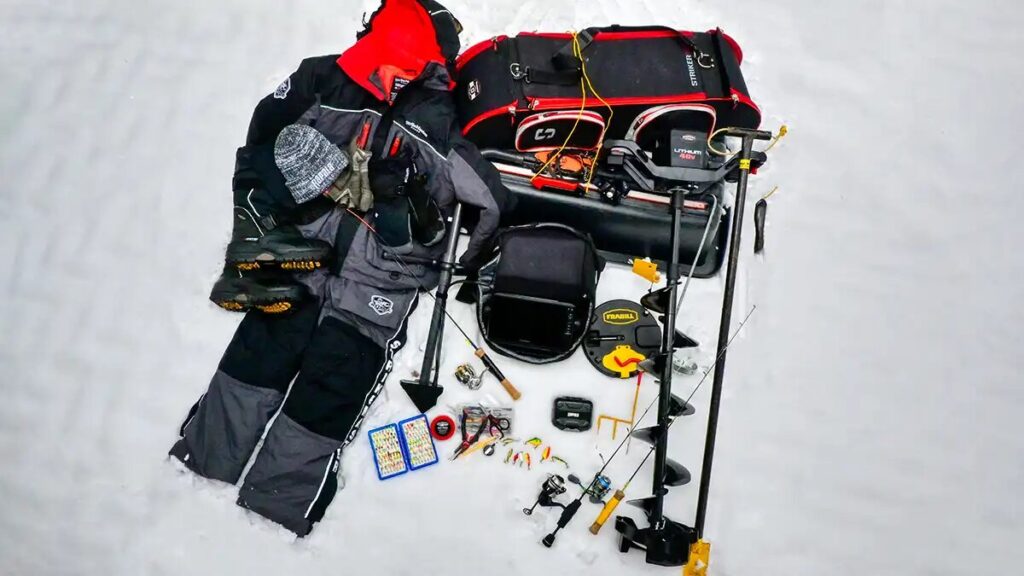
1. Fishing Rods and Reels
Selecting the right rod and reel is crucial for a successful fishing experience. Rods vary in length, flexibility, and material, while reels come in different types, such as spinning and baitcasting. Choosing the appropriate combination depends on the type of fishing and the target species. A well-balanced rod and reel setup can significantly improve casting accuracy and fish retrieval.
2. fiskning Line
The fishing line connects the rod to the hook or lure. Monofilament, fluorocarbon, and braided lines each have their unique properties and applications. Monofilament is versatile and easy to handle, fluorocarbon is nearly invisible underwater and has low stretch, and braided line is extremely strong and suitable for heavy cover fishing. Selecting the right line depends on factors such as water clarity, target species, and fishing technique.
3. Hooks and Bait
Hooks come in various sizes and shapes, suited for different fish species. Bait can be live (worms, minnows) or artificial (plastic worms, spinnerbaits). Live bait often attracts more fish due to its natural movement and scent, while artificial lures offer versatility and can mimic various prey items. The choice between live and artificial bait depends on personal preference and the fishing conditions.
4. Additional Gear
Other essential gear includes tackle boxes, fishing nets, pliers, and fishing apparel. Tackle boxes help organize and protect your equipment, while nets make landing fish easier. Pliers are useful for removing hooks and handling fish. Proper fishing apparel, such as waders and weather-appropriate clothing, enhances comfort and safety.
fiskningTechniques
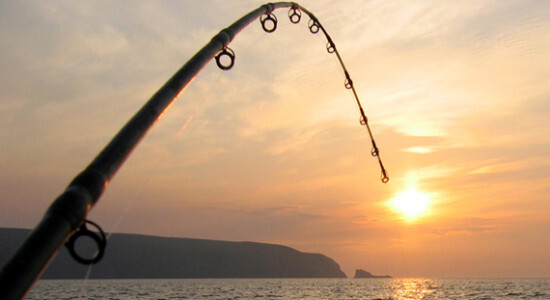
1. Casting
Casting involves throwing the bait or lure into the water. Techniques include overhead casting, sidearm casting, and underhand casting. Each technique has its advantages, and mastering them allows anglers to place their bait accurately. Proper casting technique reduces line tangles and increases the chances of a successful catch.
2. Trolling
Trolling involves dragging a baited line behind a moving boat. It’s effective for covering large areas and attracting fish. Trolling can be done at various depths using downriggers or planers. This technique is particularly useful for targeting species like salmon, walleye, and striped bass.
3. Jigging
Jigging uses a weighted lure that is moved up and down to mimic the movement of prey. This technique is often used in deep water. Jigging requires precise rod movements to create an enticing action. It’s effective for catching fish species like cod, snapper, and grouper.
4. Drift Fishing
Drift fishing involves allowing your bait or lure to move naturally with the current. This technique is effective in both freshwater and saltwater environments. Drift fishing allows anglers to cover different depths and areas, increasing the chances of encountering fish.
Environmental Impact of fiskning
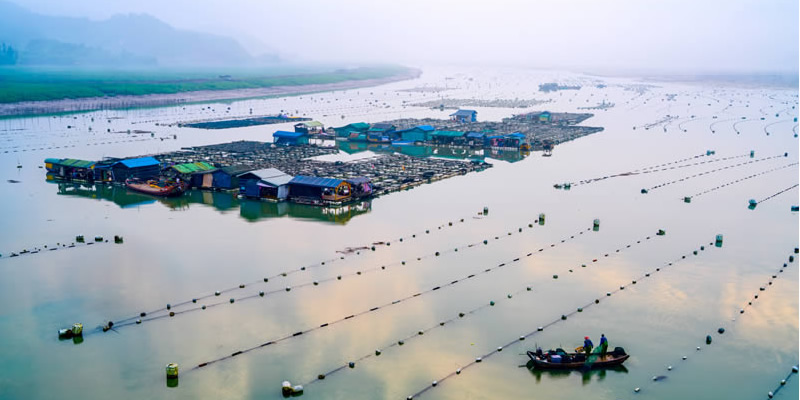
1. Overfishing
Overfishing depletes fish populations and disrupts marine ecosystems. Sustainable fishing practices are essential to mitigate this impact. Overfishing can lead to the collapse of fish stocks, affecting both the environment and the livelihoods of people who depend on fishing.
2. Habitat Destruction
Fishing activities can damage habitats, such as coral reefs and seagrass beds. Protecting these environments is crucial for maintaining biodiversity. Destructive practices like bottom trawling and the use of dynamite can devastate marine habitats, leading to long-term ecological damage.
3. Pollution
Discarded fishing gear and chemical pollutants harm aquatic life. Reducing pollution through proper waste management and eco-friendly practices is vital. Lost fishing gear, often referred to as “ghost gear,” continues to catch and kill marine animals, posing a significant threat to wildlife.
4. Conservation Efforts
Various organizations and governments are working towards sustainable fishing practices and habitat conservation. Efforts include implementing fishing quotas, protecting critical habitats, and promoting catch-and-release fishing. Public awareness and education are also crucial in fostering a culture of conservation among anglers.
Beginner’s Guide to fiskning
1. Choosing the Right Gear
Beginners should start with basic gear, including a rod, reel, line, hooks, and bait. Consulting local tackle shops for advice can be helpful. Starting with easy-to-use equipment like a spinning rod and reel combo allows beginners to focus on learning the basics without getting overwhelmed.
2. Finding a fiskning Spot
Research local fishing spots, considering factors like water type (freshwater or saltwater) and fish species. Public lakes, rivers, and coastal areas are good starting points. Joining local fishing forums or groups can provide valuable insights into the best fishing locations and times.
3. Basic fiskning Tips
- Learn Casting Techniques: Practice different casting methods to improve accuracy and distance. Proper casting technique is fundamental to successful fishing.
- Be Patient: Fishing requires patience; don’t get discouraged if you don’t catch anything right away. Enjoy the process and the time spent in nature.
- Understand Local Regulations: Familiarize yourself with local fishing laws and regulations. Adhering to these rules ensures sustainable fishing and avoids legal issues.
- Join a Community: Consider joining a local fishing club or online forum to learn from experienced anglers. Sharing experiences and tips can accelerate your learning curve.
4. Beginner Mistakes to Avoid
- Overloading Your Tackle Box: Start with the essentials and gradually expand your gear. Too much gear can be overwhelming and unnecessary.
- Ignoring the Weather: Check the weather forecast before heading out. Fishing during storms or extreme conditions can be dangerous.
- Using the Wrong Bait: Choose bait that is appropriate for the target species and local conditions. Research or ask local anglers for recommendations.
- Neglecting to Sharpen Hooks: Dull hooks reduce the chances of hooking a fish. Regularly check and sharpen your hooks to ensure they are effective.
Advanced fiskning Strategies
1. Reading Water
Understanding how to read water is crucial for locating fish. Look for structures such as rocks, submerged logs, and weed beds, as these provide shelter and attract fish. Observing water currents, temperature variations, and the presence of baitfish can also help identify potential fishing spots.
2. Using Technology
Modern technology, such as fish finders and GPS, can enhance your fishing experience. These devices help locate fish and navigate unfamiliar waters. Fish finders use sonar to detect fish and underwater structures, while GPS units provide accurate navigation and mapping.
3. Tying Knots
Knowing how to tie various fishing knots is essential. Different knots are suited for different purposes, such as attaching hooks, tying lures, and connecting lines. Practicing knots like the improved clinch knot, Palomar knot, and loop knot can improve your fishing success.
4. Night Fishing
Night fishing offers a unique experience and the opportunity to catch species that are more active after dark. Using lights to attract fish and adjusting techniques for low-light conditions can increase your chances of success.
fiskning Safety Guidelines
1. Essential Safety Tips
- Wear a Life Jacket: Always wear a life jacket when fishing from a boat or in deep water. Safety should be the top priority, especially in unpredictable environments.
- Check the Weather: Monitor weather conditions and avoid fishing during storms or rough seas. Sudden weather changes can pose serious risks.
- Stay Hydrated: Bring plenty of water, especially when fishing in hot weather. Dehydration can lead to heat-related illnesses.
- Use Sun Protection: Wear sunscreen, a hat, and sunglasses to protect against sunburn and glare. Prolonged sun exposure can cause skin damage and eye strain.
- First Aid Kit: Carry a first aid kit for emergencies, including items like bandages, antiseptic, and pain relievers. Being prepared for minor injuries can prevent them from becoming major issues.
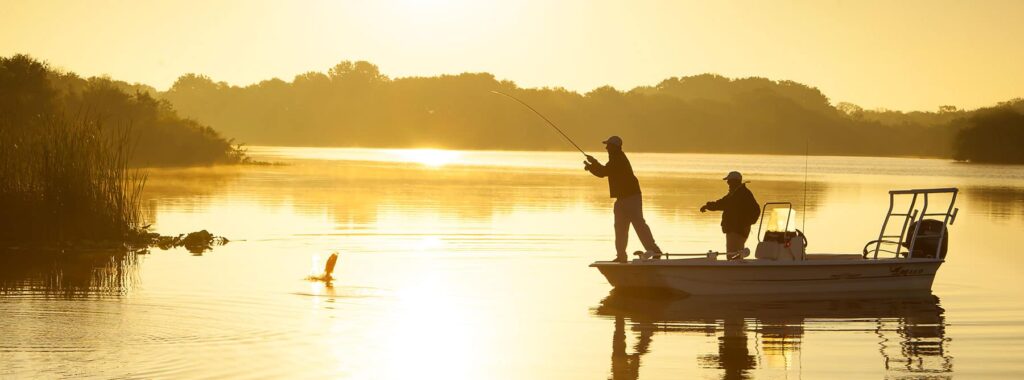
2. Boating Safety
If you’re fishing from a boat, follow boating safety guidelines, including carrying essential safety equipment, understanding navigation rules, and avoiding alcohol consumption while operating the boat. Regularly maintaining your boat and its equipment ensures a safe and enjoyable outing.
The Future of fiskning
1. Sustainable Practices
Sustainability is the future of fishing. Practices like catch-and-release, selective harvesting, and using eco-friendly gear help preserve fish populations. Anglers are increasingly adopting conservation-minded approaches to minimize their impact on the environment.
2. Technological Innovations
Advancements in technology are revolutionizing fishing. Innovations like smart fishing gear, mobile apps for tracking catches, and drone technology for scouting fishing spots are enhancing the fishing experience. These tools provide valuable data and insights, helping anglers make informed decisions.
3. Environmental Awareness
As awareness of environmental issues grows, more anglers are participating in conservation efforts. Initiatives like habitat restoration projects, beach cleanups, and advocacy for stricter fishing regulations are gaining traction. The fishing community is recognizing the importance of protecting aquatic ecosystems for future generations.
4. Education and Outreach
Educational programs and outreach initiatives are crucial for promoting responsible fishing practices. Organizations are working to educate the public about the importance of sustainable fishing and the impacts of overfishing. By fostering a culture of stewardship, these efforts aim to ensure the long-term health of fish populations and their habitats.
FAQ’s
1. What type of fiskning line should I use?
The choice of fishing line depends on the fishing conditions and target species. Monofilament is versatile, fluorocarbon is nearly invisible underwater, and braided line is very strong.
2. How do I choose the right fiskning rod?
Consider the type of fishing you plan to do, the target species, and your personal preferences. Rod length, material, and flexibility are key factors.
3. How can I practice sustainable fiskning?
Practice catch-and-release, follow local regulations, use eco-friendly gear, and participate in conservation efforts to promote sustainable fiskning.
4. What are the common freshwater fish species?
Common freshwater fish include bass, trout, catfish, and pike. Each species requires different techniques and baits.
5. Is saltwater fishing different from freshwater fiskning?
Yes, saltwater fishing often involves different equipment and techniques due to the size and strength of marine fish. It also requires knowledge of tides and ocean conditions.
6. Can I fish in winter?
Yes, ice fishing is a popular winter activity in regions with freezing temperatures. It requires specialized gear and safety precautions.
7. What is the impact of overfishing?
Overfishing depletes fish populations and disrupts marine ecosystems. Sustainable practices are essential to mitigate this impact.
8. What are the benefits of joining a fishing community?
Joining a fishing community provides access to shared knowledge, support, and camaraderie. It’s a great way to learn from experienced anglers.
9. What safety measures should I take when fishing from a boat?
Always wear a life jacket, carry essential safety equipment, understand navigation rules, and avoid alcohol consumption while operating the boat.
10. How do I use a fish finder?
Fish finders use sonar to detect fish and underwater structures. Understanding how to read the display and adjust settings can help locate fish more effectively.
11. What are the latest technological advancements in fiskning?
Technological advancements include smart fishing gear, mobile apps for tracking catches, and drone technology for scouting fishing spots. These innovations enhance the fishing experience and provide valuable data.
Conclusion:
Fishing, or fiskning, is more than just a recreational activity; it’s a way to connect with nature, practice patience, and develop skills.
Whether you’re a beginner or an experienced angler, there’s always something new to learn and explore in the world of fishing.
By adopting sustainable practices and respecting the environment, we can ensure that fishing remains a beloved pastime for generations to come.
